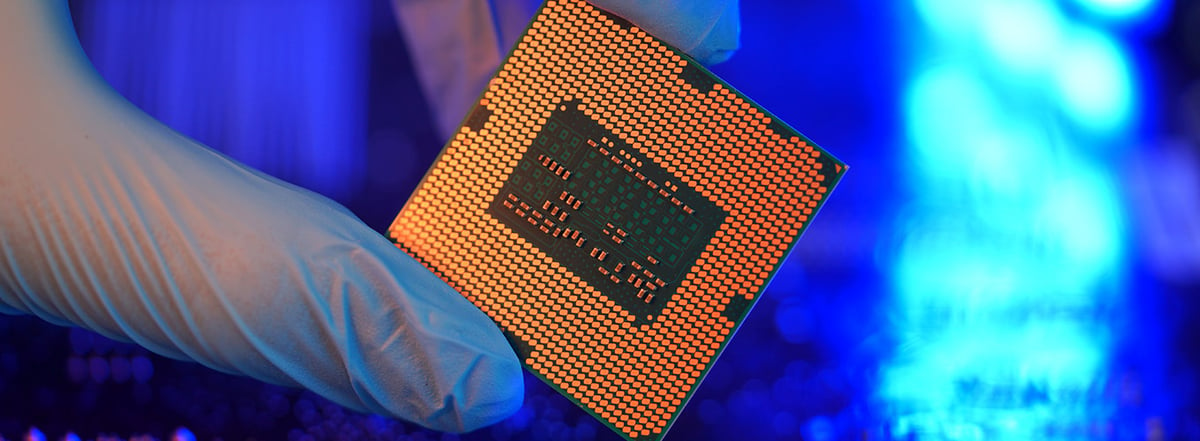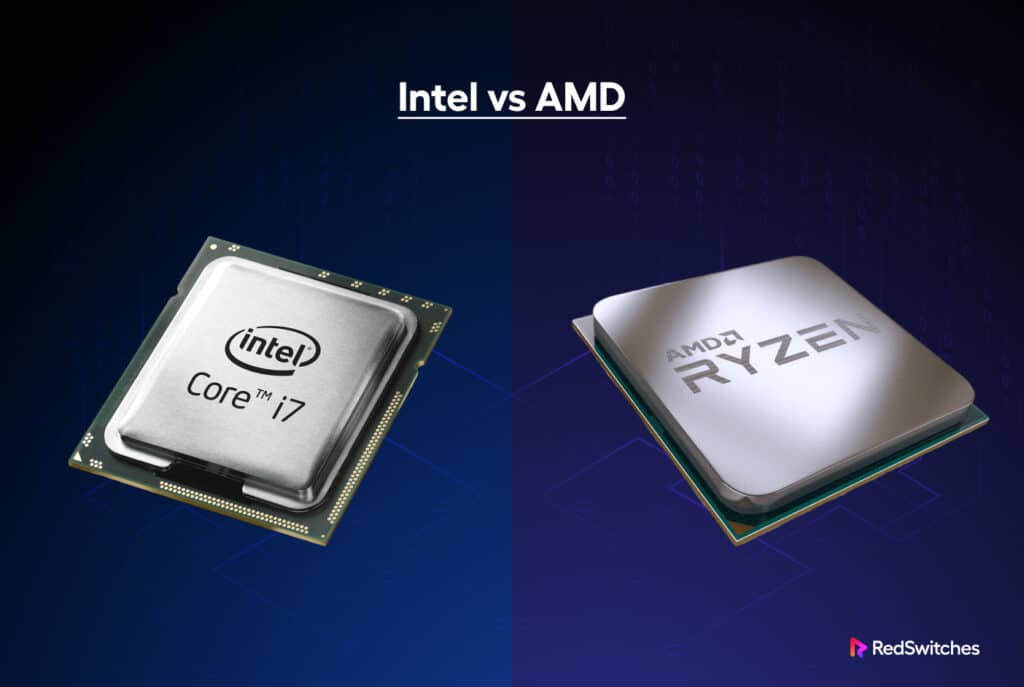Choosing between AMD and Intel in 2024 requires a deep understanding of your computing needs, budget constraints, and the specific advantages each brand brings to the table. Both AMD and Intel have made significant strides in recent years, offering competitive products that cater to a variety of user demands, from gaming and general-purpose computing to professional workloads involving high-performance computing.
AMD Overview
Historical Context and Evolution: AMD has had a remarkable journey over the past decade, evolving from a position of being a budget-friendly alternative to Intel to becoming a formidable competitor in both consumer and professional markets. The introduction of the Ryzen series in 2017 marked a turning point for AMD, shifting the market dynamics significantly. The Ryzen series brought a high core and thread count at competitive prices, which directly challenged Intel’s dominance.
Performance and Architecture: AMD’s Ryzen processors, particularly the Ryzen 5000 and 7000 series, are known for their high multicore performance, making them ideal for multi-threaded applications such as video editing, 3D rendering, and heavy computational tasks. The Zen architecture, now in its fourth iteration with Zen 4, provides significant performance improvements with each generation, focusing on efficiency and power consumption. AMD’s use of a chiplet design in their CPUs has allowed them to scale performance effectively while maintaining cost efficiency.
Value Proposition: AMD has consistently offered better performance per dollar, especially in the mid-range and high-end segments. This value proposition extends to their APUs (Accelerated Processing Units) as well, which combine strong CPU performance with competent integrated graphics, ideal for budget builds and small form factor PCs.
Future Proofing: One of AMD’s key advantages is their commitment to socket longevity. The AM4 socket, for instance, supported multiple generations of CPUs, allowing users to upgrade their processors without needing to replace the motherboard. This strategy continues with the AM5 socket, ensuring that users can expect a longer upgrade path compared to Intel’s frequent socket changes.
Professional and Gaming Performance: For professional workloads, AMD’s Ryzen 9 and Threadripper series provide unparalleled multi-core performance, making them favorites among content creators and professionals. In gaming, AMD has closed the gap with Intel, offering competitive performance with high frame rates and better overall gaming experience, especially at higher resolutions. The integration of technologies like PCIe 4.0 and PCIe 5.0, along with better support for DDR5 memory, has further solidified AMD’s position in the gaming market.

Intel Overview
Historical Context and Evolution: Intel has been a dominant force in the CPU market for decades, known for their strong single-core performance and widespread use in various computing environments. Despite facing stiff competition from AMD in recent years, Intel has continued to innovate and maintain a strong presence in both consumer and enterprise markets. The introduction of the Alder Lake and Raptor Lake series has brought significant architectural changes, utilizing a hybrid architecture that combines high-performance cores (P-cores) with efficient cores (E-cores) to optimize performance and power efficiency.
Performance and Architecture: Intel’s latest CPUs leverage the 10nm process technology, which has allowed them to pack more transistors into smaller spaces, improving performance and energy efficiency. The hybrid architecture introduced with Alder Lake, and continued with Raptor Lake, is particularly beneficial for balancing workloads between high-performance tasks and background processes. Intel’s CPUs generally excel in single-core performance, which remains critical for tasks like gaming and certain professional applications that rely heavily on single-threaded performance.
Value Proposition: While Intel CPUs tend to be more expensive than their AMD counterparts, they offer strong performance in areas that benefit from high single-core speeds. Additionally, Intel’s integration of features like Thunderbolt, Optane memory support, and Wi-Fi 6/6E in their platforms adds value for users looking for advanced connectivity and storage solutions.
Compatibility and Ecosystem: Intel has a robust ecosystem, with widespread industry support and compatibility with a vast array of motherboards and peripherals. However, Intel’s frequent socket changes can make upgrading more costly, as a new CPU often requires a new motherboard. Despite this, Intel’s stable and reliable platform makes it a go-to choice for many enterprise environments and system integrators.
Professional and Gaming Performance: For gaming, Intel’s superior single-core performance often translates to higher frame rates, particularly in titles that are CPU-bound. Professional users also benefit from Intel’s advanced technologies and optimizations in software like Adobe Creative Suite and other productivity tools. Intel’s Xeon series remains a staple in server and workstation environments, providing reliable performance for critical applications.

Detailed Comparison
Gaming:
Intel:
Typically edges out AMD in terms of raw gaming performance, particularly in CPU-bound games where single-core performance is crucial. The Alder Lake and Raptor Lake series, with their high clock speeds and advanced architectures, offer exceptional gaming experiences. Intel’s integrated graphics on some CPUs also provide a decent gaming experience without a dedicated GPU, useful for casual gamers and small form factor builds.
AMD:
With the latest Ryzen processors, AMD has significantly closed the gap in gaming performance. Ryzen CPUs offer strong performance in both single-threaded and multi-threaded scenarios, making them versatile for gaming and streaming. AMD’s Smart Access Memory (SAM) technology, which allows Ryzen CPUs to fully utilize the GPU’s VRAM, provides a notable performance boost in compatible games.

Conclusion
Both AMD and Intel have compelling offerings in 2024, and the choice between the two largely depends on your specific requirements and budget. If you prioritize single-core performance, gaming, and advanced platform features, Intel remains a strong contender, particularly with their latest Alder Lake and Raptor Lake processors. On the other hand, if you seek excellent multi-core performance, better value for money, and longer-term upgrade paths, AMD’s Ryzen and Threadripper series are highly attractive.
For gamers, Intel’s edge in single-core performance might provide slightly better frame rates in CPU-bound titles, but AMD’s competitive performance, value, and features like Smart Access Memory make it a strong choice as well. For professional users and content creators, AMD’s higher core counts and superior multi-threaded performance offer clear advantages, particularly in applications that can leverage these capabilities.
Ultimately, the best choice will depend on your specific use case, whether it’s gaming, content creation, professional workloads, or general computing. Both AMD and Intel have robust ecosystems, advanced technologies, and a wide range of products that cater to different needs. Careful consideration of your requirements, budget, and future plans will help you make an informed decision, ensuring you get the most out of your investment in a new CPU.


3 Comments
Lorem ipsum dolor sit amet, consectetur adipiscing elit, sed do eiusmod tempor incididunt ut labore et dolore magna aliqua. Quis ipsum suspendisse ultrices gravida. Risus commodo viverra maecenas accumsan lacus vel facilisis.
Cras maximus ultricies volutpat. Praesent ut enim non enim vulputate fringilla.
Cras maximus ultricies volutpat. Praesent ut enim non enim vulputate fringilla.